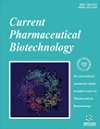
Full text loading...
We use cookies to track usage and preferences.I Understand

Vaginal douching is a centuries-old practice which is still in use, especially among adolescents. “Probiotic douches” are the vaginal douches that are formulated with probiotics and are intended to restore or maintain the vaginal microbiome balance. Probiotic douches are a new type of feminine hygiene product that claims to promote a balanced vaginal microbiome and improve overall well-being. However, the evidence supporting the use of probiotics for vaginal health is limited because of the variability in probiotic strains and dosages studied, and the lack of more comprehensive, long-term clinical trials. Most of the existing scientific literature on probiotics focuses on oral probiotic supplements and vaginal probiotic suppositories. Some potential benefits of probiotic douches include restoring a balanced vaginal microbiota, preventing, or managing infections, supporting local immune function, reducing odor and discharge, and enhancing overall vaginal comfort. However, it is important to note that these benefits have not been definitively proven and remain a subject of ongoing research. There are also potential risks associated with their use including disruption of the natural vaginal ecosystem by introducing foreign substances, risk of infection, and stability issues with the formulation that may lead to negative consequences. This review attempts to comprehend the critical need for robust scientific research to guide the safe and effective incorporation of probiotic douches into modern feminine hygiene practices, revolutionizing women's health, and well-being.

Article metrics loading...

Full text loading...
References


Data & Media loading...